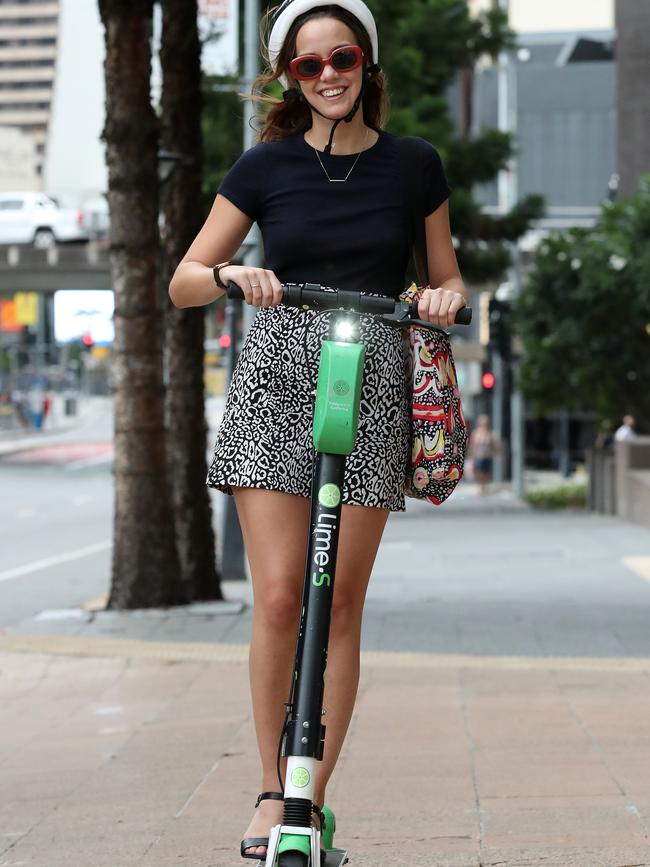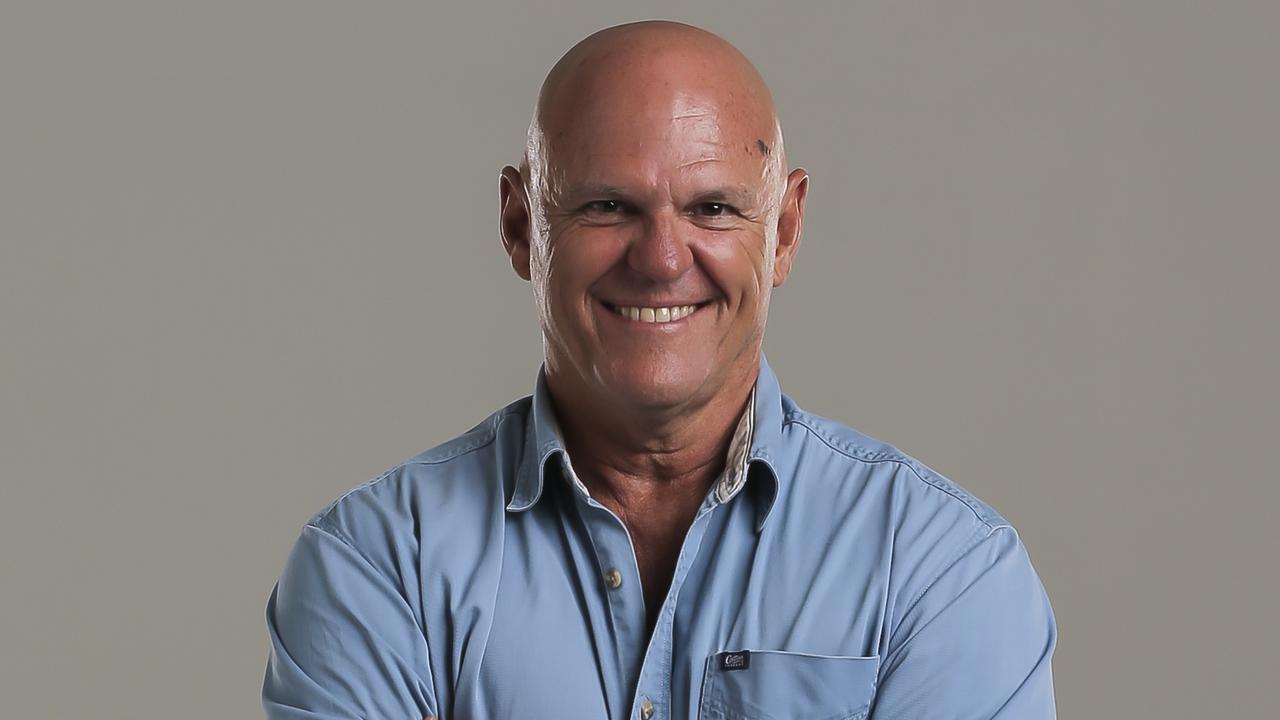Are scooters the e-ride of the future? If so we better adapt
Cities around the world are grappling with how to manage the arrival of shared e-scooters schemes but at least according to some, the central question is settled: they’re here to stay, writes Michael Wray
Opinion
Don't miss out on the headlines from Opinion. Followed categories will be added to My News.
AS Rebecca Purcell pulled the throttle on a Lime Scooter, zipping towards Brisbane’s CBD from West End, she had no idea she was riding into history.
But somewhere along the route, the 23-year-old’s phone pinged with a message saying she was the millionth Lime rider since it launched in Brisbane last year.
Purcell, one of 250,000 registered riders in Brisbane, says she was an early adopter of the technology, hopping aboard on the first day they appeared on streets. “I’ve got friends living overseas and they’d been asking when is Brisbane going to get e-scooters?” she says.
Lime has seized on last week’s landmark with a fresh round of publicity, focusing on a new safety campaign it hopes will protect riders and silence a vocal band of doctors, lawyers and advocates opposing the company’s every move.
As an upstart digital disrupter trying to change the face of transport in a city still grappling with the arrival of Uber five years ago, Lime never expected an easy ride.
The company has butted heads with regulators from San Francisco to New York and Adelaide.
And at times its Brisbane operation has seemed perched on the edge of oblivion as it’s faced a string of issues including injuries, drunk riders, malfunctioning brakes and, two weeks ago, the death of a 50-year-old rider who crashed down a flight of steps in South Bank.
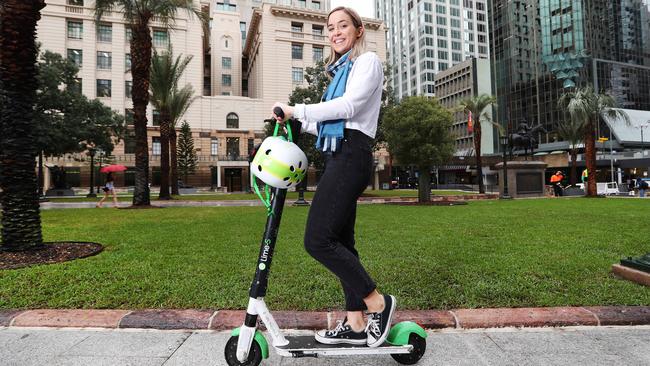
Cities around the world are grappling with how to manage the arrival of shared e-scooter schemes but according to Brisbane City Council Deputy Lord Mayor Krista Adams (below) the central question is settled.
“Whether we like it or not, e-scooters are here to stay with the State Government giving them the nod,” she says.
She says the council is finalising a tender process and is just weeks away from announcing two companies to each run 500 scooters in the city.
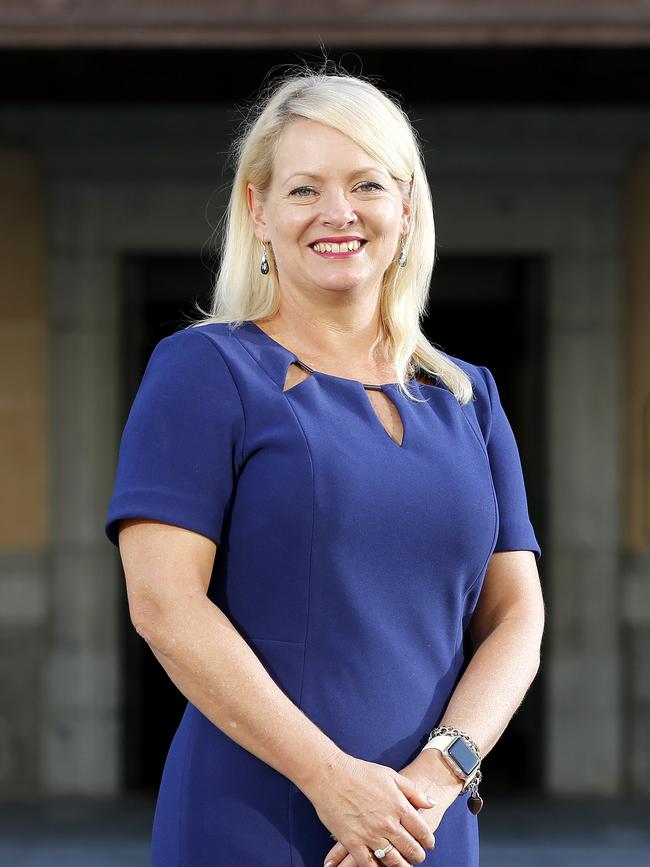
Lime, which has Uber, Alphabet and Google on its share registry and has been valued at about $2 billion, would seem to have the inside running on one of the licenses.
But the council maintains it has operated a competitive tender process for nine companies bidding.
Lime regional director of government relations Mitchell Price claims Brisbane is one of the company’s best performing markets. The company runs scooters and electric bikes in more than 100 cities around the world and Brisbane is regularly ranked in the top 10 . “When you’re introducing this type of new transport into a city … it’s always going to be a struggle, but I think, all in all, Brisbane is … the key to the success of our business in Australia,” he says.
When Price first knocked on Transport Minister Mark Bailey’s door in October last year, e-scooters were illegal in Queensland. But he learnt that transport officials were nearing the end of an 18-month review of rideable technology.
Price says Lime was planning to launch anyway but Bailey granted an 11th hour permit, giving the operation legitimacy from day one.
About a month later, with the review completed, Bailey legalised e-scooters, which he said was “in recognition of people’s changing travel habits”.
“Rideables provide a new transport option to get around southeast Queensland and there is plenty of upside to having e-scooters easily available to people,” he said.
When Lime’s permit expired at the end of 2018 the Brisbane City Council allowed Lime to continue operating 750 scooters until the tender process was finalised.
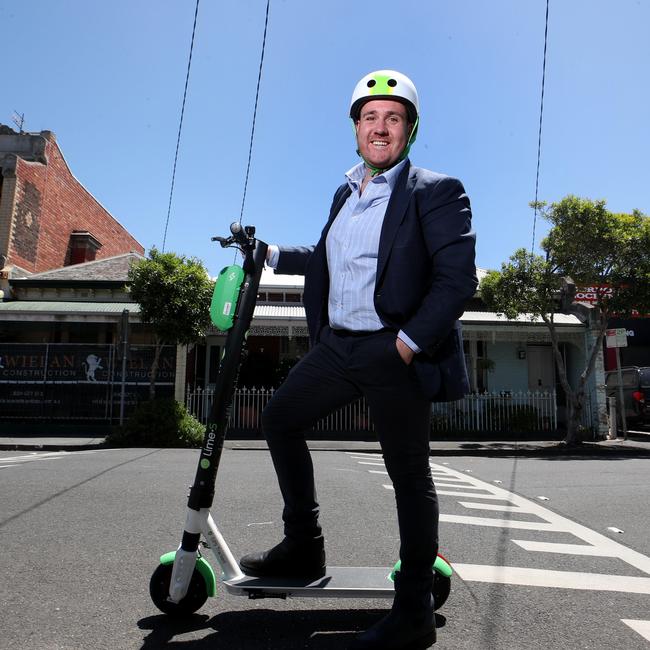
That experience was in stark contrast to an attempted launch on the Gold Coast days after Christmas, where Lime found itself at war with a council threatening to seize scooters from the streets. Despite cancelling the launch, Lime hasn’t given up on operating on the Glitter Strip but admits they will have to “rebuild” their relationship with the council.
Even as they were being kicked off the streets of the Gold Coast, Lime was recording huge numbers of riders in Brisbane, with more than 300,000 trips in its first two months.
But as more riders jumped on board, the inevitable crashes and injuries piled up and pedestrians started complaining about tearaway riders weaving along footpaths – the only place they can legally operate.
Paramedics delivered an urgent warning after treating dozens of riders for traumatic injuries including shattered bones, fractures and head injuries. A Queensland Health spokeswoman said emergency departments in Brisbane’s hospitals had been treating about 70 people each month injured in scooter accidents – though those figures included all motorised scooters not just Lime.
Lime has said it has a comprehensive insurance policy that exceeds state and council requirements for its riders. But for a growing list of injured riders the next stop after the emergency department is the waiting room of a law firm. Shine Lawyers solicitor Sarah Grace claims multiple Lime victims have been seriously injured as a result of potential glitches and also the scooters being unable to handle their maximum speed.
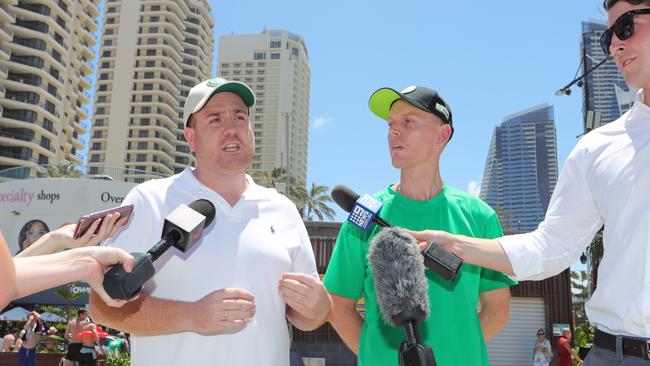
“We’re also disappointed to see Lime have failed to respond to legitimate complaints from clients and only responded to offer meagre compensation agreements to prevent or mitigate legal claims or media attention,” she says.
Police have also issued warnings to riders with data from December 14 last year to May 16 showing officers had issued 466 infringement notices around Queensland for offences such as not wearing a helmet and riding on a road.
The figures are not limited to Lime and include all “personal mobility devices” such as e-scooters and segways.
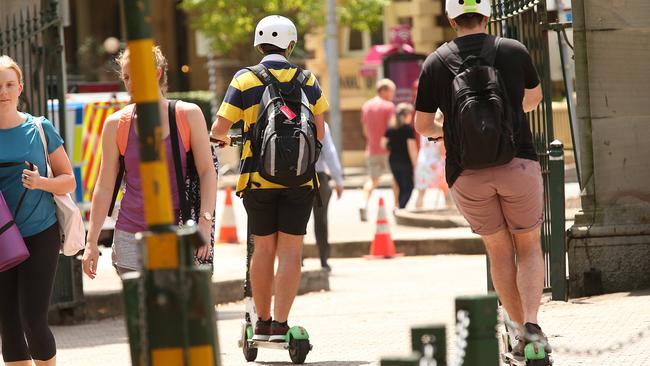
The most harrowing incident Lime has faced came two weeks ago when a 50-year-old man crashed down a flight of South Bank stairs, hitting his head.
He was wearing a helmet but was found in cardiac arrest and later died in hospital.
Price says the company has ruled out that the scooter malfunctioned. He says Lime had updated the technology on board since technicians fixed a braking glitch discovered in February.
Analysts sitting in San Francisco and China now receive data such as braking records from the machines every half a second.
“In what has been a tragic accident, we were able to very quickly and swiftly run the logs on that scooter … and were able to quickly rule out that this was any failure of the scooter or the brake itself.” The coroner is investigating.
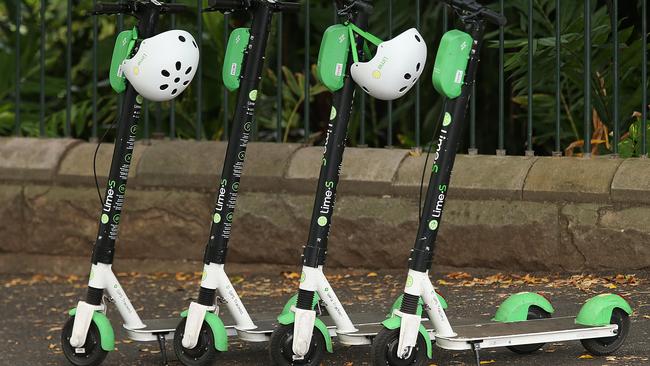
As regulators, police and politicians continue to monitor scooters use in Brisbane, they are remaining tight lipped about possible new regulations. Bailey said recently the State Government was willing to consider varying speed limits, but did not want to make it confusing for riders.
Price says he has been lobbying the minister for scooters to be allowed to use low speed streets in the city as well as bicycle lanes.
Ultimately he believes Brisbane could be a 5000 scooter market if caps are relaxed or removed.
“If councils and governments allow us the ability to grow our business and to scale, then we are able to then expand that service into areas where there are far fewer options for public transport.”
michael.wray@news.com.au
